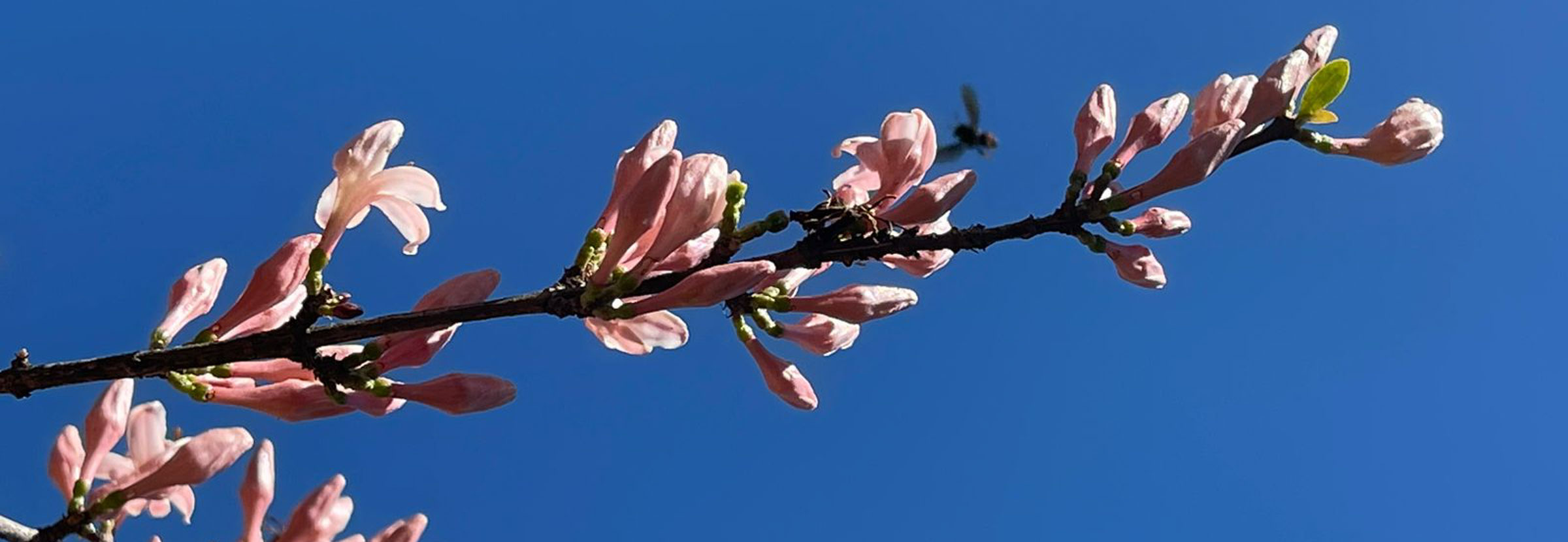Why do some coffee plants produce pink flowers?
For the millions of farmers around the world, the emergence of fragrant flowers on coffee plants marks one of the most important stages of the production cycle. The timing of blooming varies between producing countries, but it’s inevitably a key indicator of potential productivity for the season ahead.
Most of us are familiar with the white jasmine-scented flowers. In some rare cases, however, coffee plants produce pink flowers. There are a number of reasons for this striking difference, but what are they?
To find out, I spoke to Oliveiro Guerreiro Filho, a genetic and plant breeding expert at the Instituto Agronômico de Campinas, Juan Diego de la Cerva, owner of Finca El Socorro, and Tommaso Bongini, head roaster at Gearbox Coffee Roasters.
You may also like our article exploring why coffee plants flower and what it means for producers.

The genetic diversity of coffee flowers
“As a general rule, coffee flowers are white,” Oliveiro says. “There are some genetic variations, including the number of petals and stamens, as well as the shape of the corolla tube.”
Sometimes, however, certain coffee species and varieties bear pink flowers. Oliveiro says that while this is relatively uncommon, it occurs because of two main reasons:
- The result of inherent, natural genetic variations. This is especially true for certain species and varieties, including Coffea racemosa and Aramosa
- The product of a spontaneous gene mutation known as “purpurascens”
“With purpurascens-afflicted coffee plants, young and adult leaves – as well as new stems and stipules – are purplish in colour,” Oliveiro explains.
Comparatively, when coffee plants consistently reproduce purpurascens characteristics from one generation to the next, many producers classify and treat them as separate varieties. Botanists, meanwhile, classify them as cultivars. This is because they have been intentionally propagated to preserve their more unique characteristics.
“Purpurascens coffee flowers are pink because their gene expression affects the colour of the whole plant and not just the flowers, as opposed to the natural genetic make-up of coffee varieties that makes them produce pink flowers,” Oliveiro tells me. “For the latter, just the flowers are pink – not the leaves, stems, and stipules.”

What causes the purpurascens mutation?
Oliveiro explains how the mutation can occur in certain Coffea species – including arabica, robusta (or canephora), liberica, and racemosa.
“A gene can have several alleles,” he tells me. “The gene is a part of the DNA or RNA that controls a certain characteristic, such as the pink colour of flowers, while the allele is the specific variation of the gene, which will determine how this characteristic will be expressed.
“So the purpurascens phenotype is a genetic mutation in the chromosome DNA sequence of coffee plants,” he adds.
While this doesn’t prevent the normal formation of leaf tissue, it can be passed down to future generations – meaning it’s possible for more plants to produce pink flowers.
Throughout his studies, Oliveiro has noted that coffee plants with the purpurascens mutation have lower yields, but are just as susceptible to pests and diseases as non-affected coffee plants.
Which species & varieties typically produce pink flowers?
Over the years, producers and researchers have reported countless instances of coffee plants producing pink flowers. Oliveiro adds that in some former English colonies, these plants are known as “orange coffee”.
Additionally, in Indonesia, these plants are called Koppi wengue, while in Brazil, farmers typically refer to them as “purple coffee” or “café carangola”.
The first scientifically recorded purpurascens-mutated coffee was discovered in Java, Indonesia in the early 1900s, which was identified as a mutation of Typica.
Aramosa coffee
The Aramosa variety is a natural hybrid of the arabica and racemosa species, and typically has a low caffeine content. Originating from Mozambique, Coffea racemosa is one of the oldest species, and was first introduced to producers in Brazil in 1954.
Aramosa plants are fairly robust and resistant, even to harsher weather conditions. When ripe, its fruits are purplish red, while the flowers are rose pink in colour.
The Finca El Socorro “Purpuracea” variety
When the mother originates from an arabica plant, it is easier to crossbreed spontaneous purpurascens varieties. However, the genes that determine the colour of the flowers are recessive – which means the dominant gene will express itself more.
One example is Purpuracea – a variety grown by Juan Diego de la Cerva, who is a Guatemalan producer and the owner of Finca El Socorro.
Juan Diego explains that in 2009, some of his Maracaturra seedlings had purple leaves, so he and his team decided to plant them on a separate lot.
“After a while, we noticed their morphology was very different, with lower yields compared to the Maracaturra mother,” he says.
During an initial tasting, Juan Diego says the cup profile was excellent – and even consistently received over 90 points at various cuppings. He then decided to grow the Purpuracea variety on a commercial scale using rootstock grafting techniques.
In 2007, 2011, and 2020, Finca El Socorro’s Purpuracea went on to win the Cup of Excellence Guatemala competition – a clear sign of quality.
“At the moment, we don’t intend to publicise the genetic make-up of these plants,” Juan Diego says. “This is something unique that we want to preserve as exclusive to our farm.”

What does Purpuracea coffee taste like?
Tommaso is also the head roaster at Gearbox Coffee Roasters in Florence, Italy. The company has sourced Juan Diego’s Purpuracea since 2019.
“We have purchased fully-washed Purpuracea coffee, which has a tremendous and persistent acidity, good body, and complexity,” he explains.
Following this, Tommaso asked Juan Diego to use natural processing methods.
“The result was way beyond expectation: a more enhanced body than the washed coffee, and a great acidity that went from citric to malic and acetic,” he adds.
Common tasting notes for washed Purpuracea include blackcurrant, ripe plum, and lychee, while the natural processed coffee has notes of plum, cotton candy, poached pear, and green tea.
“It’s a unique coffee and therefore costs more,” Tommaso says. “But it’s worth it.”

Most producers have probably never seen pink flowers on coffee plants – and may never encounter them. While natural mutations can certainly occur, it’s very rare to come across pink flowers on coffee farms.
However, lesser-known coffees – like Juan Diego’s Purpuracea – show strong potential in the specialty coffee market, which increasingly values rare and unconventional species and varieties.
And as producers and researchers continue to develop hybrid plants, there’s the chance that we could see more pink-flowering coffee varieties in future.
Enjoyed this? Then read our article on how specialty coffee producers can use coffee flowers.
Photo credits: IAC, Finca El Salvador
Perfect Daily Grind
Want to read more articles like this? Sign up for our newsletter!





